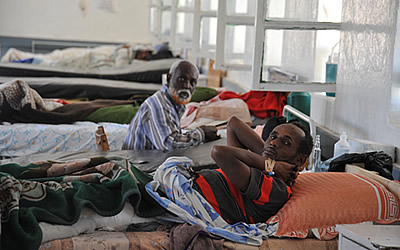Healthcare
According to the World Health Organization (WHO), A health care facility is a workplace as well as a place for receiving and giving care. Health care facilities around the world employ over 59 million workers who are exposed to a complex variety of health and safety hazards everyday including:
- Biological hazards, such as TB, Hepatitis, HIV/AIDS, SARS;
- Chemical hazards, such as, glutaraldehyde, ethylene oxide;
- Physical hazards, such as noise, radiation, slips trips and falls;
- Ergonomic hazards, such as heavy lifting;
- Psychosocial hazards, such as shiftwork, violence and stress;
- Fire and explosion hazards, such as using oxygen, alcohol sanitizing gels; and
- Electrical hazards, such as frayed electrical cords.
WHO reports in the World Health Report 2002, that of the 35 million health-care workers, 2 million experience percutaneous exposure to infectious diseases each year. It further notes that 37.6% of Hepatitis B, 39% of Hepatitis C and 4.4% of HIV/AIDS in Health-Care Workers around the world are due to needlestick injuries.

Health care facilities around the world employ over 59 million workers who are exposed to a complex variety of health and safety hazards everyday including; biological hazards, such as TB, Hepatitis, HIV/AIDS and SARS; psychosocial hazards, such as shiftwork, violence and stress.
The risk of infections in healthcare settings can be high due to overcrowding and confined spaces which could build up microorganisms to infectious levels. Airborne transmission is an important route for many microbial pathogens in indoor environments including hospitals. Indoor microbial contamination can cause health problem thus represents a disease risk factor especially in immunocompromised people.
Therefore, monitoring contamination of indoor environments is an important tool for prevention. Microbiological monitoring of water systems for pathogenic microorganisms in hospitals is also of great importance as contamination can lead to exposure of workers and the public including patients. Regular testing and data review should form part of the healthcare facilities infection control strategies. The primary pathogens of concern are Legionella, Pseudomonas aeruginosa, faecal indicators and Mycobacteria species (M.tuberculosis, M.avium, M.intracellular, M.Kanasaii, M.fortuitum). The Immunology and Microbiology Section at NIOH has been actively involved in investigations on hazardous biological agents in healthcare facilities.
Related Materials
- WHO – Health Workers resource and information
- NIOSH – CDC – Health Care Worker, Comprehensive Safety & Health Information
- HSE UK – Skin at Work
- HSE UK – Dermatitis in health and social care
- Department of Labour – Hazardous Biological Agents (HBA) managing the risks
- HSE UK – Sharps Injuries
- ILO – Framework Guidelines for Workplace Violence
- CCOHS – Dermatitis, Irritant Contact
- CCOHS – Dermatitis, Allergic Contact
- American Nurses Association – Needle stick Injuries
- WHO – Needlestick Injuries protecting health-care workers
- CCOHS – Needlestick and Sharps Injuries
- WHO – Presentation on Prevention of Needlestick Injuries and Exposure to Bloodborne Pathogens
- NIOH – Latex Allergy
- NIOH – Handwashing
- NIOH – Hazardous Biological Agents
- NIOH – Legionella
